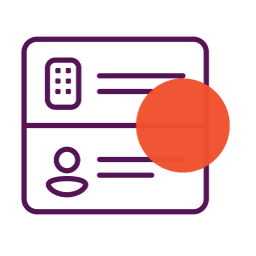Oops, it happened again. The news cycle is abuzz with the revelation that a significant data breach has hit Capital One, and the alleged perpetrator (a Seattle software engineer) has been arrested. The data breach is being called one of the largest in history, and while the suspect was accused of accessing records from a cloud-based server between March 12 and July 17 of this year, the information collected represents many years of sensitive consumer data.
Here’s what you need to know about the Capital One breach, as well as the steps to protect yourself moving forward.
What happened?
On July 19, Capital One became aware of a data breach tied to an individual. According to the company, they “immediately fixed the configuration vulnerability that this individual exploited and promptly began working with federal law enforcement.” The public was made aware on Monday, July 30, 2019. A statement was issued to the press and consumers through a custom website.
What was taken?
All data breaches vary in the types of information that are compromised. In this instance, Capital One states that the data involved things that credit card applicants put on application forms. Application records made between the years of 2005 to 2019, were affected. Data included names, dates of birth, email addresses, phone numbers, and self-reported income.
It doesn’t stop there. The bank’s statement revealed that 80,000 bank account numbers were accessed, as well as 140,000 social security numbers. Credit scores, card balances, credit limits, and what the bank calls “fragments of transaction data from a total of 23 days during 2016, 2017 and 2018.” It’s easy to see why customers are concerned.
How many were affected?
The breach will certainly be remembered as one of the biggies. With 100 million U.S. consumers and almost 6 million Canadians caught up in the mess, it’s made a significant impact on how we view the credit card application process – and banks’ efforts to keep all that data safe.
Capital One has tried to reassure consumers that they don’t believe the information was used for fraud yet, or that it was given out to others. However, the legal case is pending, and we won’t know yet what to make of all of it. The types and volume of data breached, could, in the wrong hands, give criminals just enough information to open new lines of credit under your name and participate in fraudulent activity for years to come.
What can you do?
First, you should already be accessing your three free credit reports from the official website annually. Whether you do them all at once or spread them out to have a more long-term view of your credit, is up to you. If you haven’t snagged your annual reports yet this year, do one or two right away.
Second, a credit score is an amazing window into the overall health of your credit. With today’s tech, you can see how new credit lines being opened in your name will raise or lower your score. Your available credit and payment history are all reflected. By getting both your free personal and business credit reports from Nav, you’ll have your finger on your financial pulse and will notice if something uncharacteristic pops up.
What if you don’t want to wait for something bad to show up on your history or report? You’re not alone. A more proactive approach makes sense, especially when it can take weeks or even months to get false or fraudulent activity removed from a report.
Monitoring your credit is the easiest way to manage the damage and catch it quickly if identity theft occurs as a result of the breach. You can monitor your business and personal credit scores for free on Nav.com, with 24/7 alerts on your credit profiles with both business and consumer bureaus. And if you’re especially worried you were compromised, Nav Business Manager, Business Boost, and Business Loan Builder account holders get up to $1 million in identity theft insurance.
Moving Forward
Whatever you decide to do, know that you’re not alone. With millions affected by this most recent breach, it’s something we’ll be talking about for a while. Just don’t settle for doing nothing. Get informed about your credit situation and know what you’ll do if the worst happens.
This article was originally written on July 30, 2019 and updated on September 18, 2019.


Have at it! We'd love to hear from you and encourage a lively discussion among our users. Please help us keep our site clean and protect yourself. Refrain from posting overtly promotional content, and avoid disclosing personal information such as bank account or phone numbers.
Reviews Disclosure: The responses below are not provided or commissioned by the credit card, financing and service companies that appear on this site. Responses have not been reviewed, approved or otherwise endorsed by the credit card, financing and service companies and it is not their responsibility to ensure all posts and/or questions are answered.